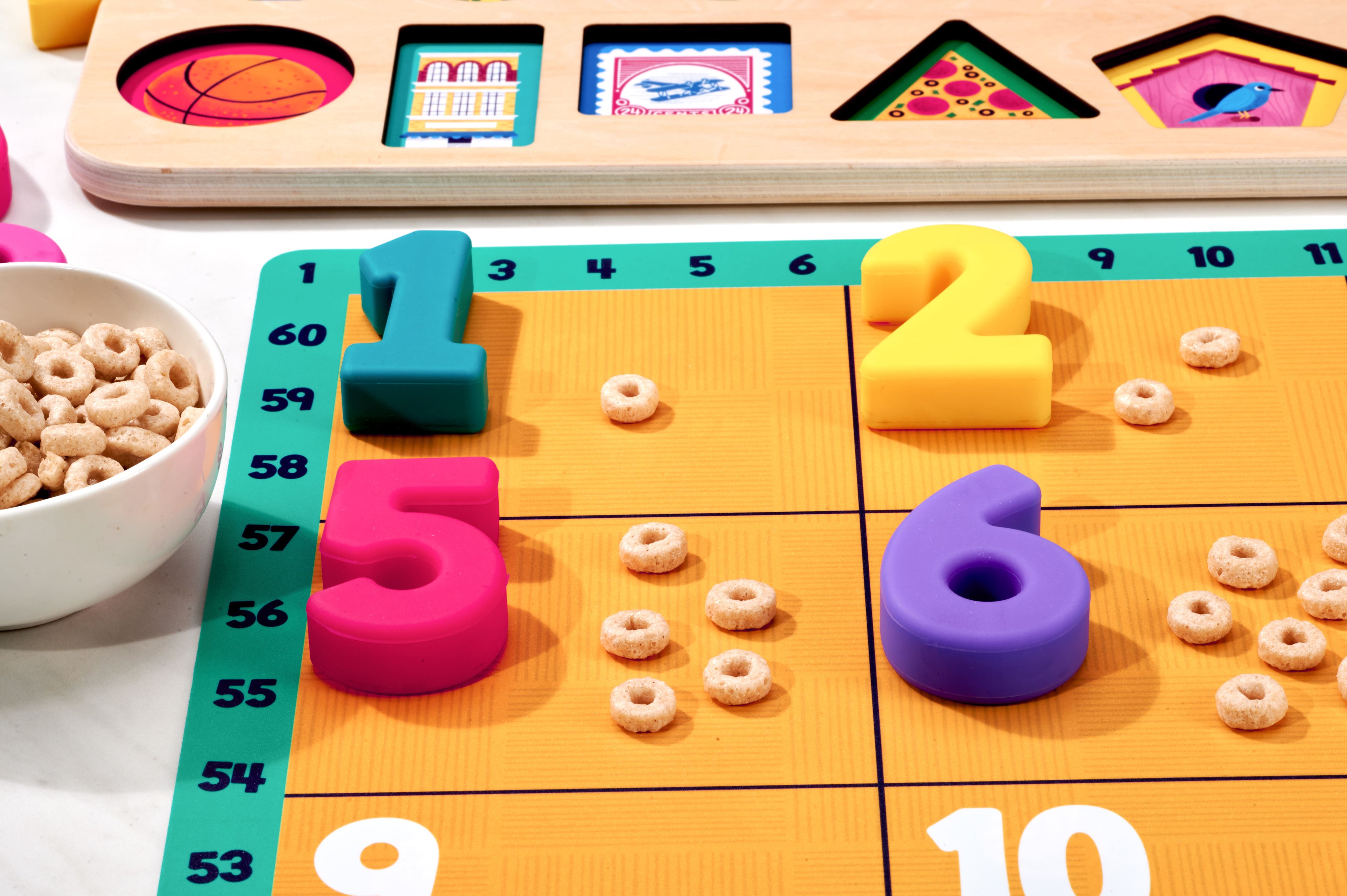Everyday Addition and Subtraction Through Play

Written by Cali @chasing50toes
If you’ve ever tried to sit your toddler down with a stack of math worksheets, you already know: it’s a no-go. But that doesn’t mean they’re not ready to learn. In fact, addition and subtraction start with play.
In our house, we use the D&J Numbers Placemat, counting chips, and even snacks to build operational thinking—without anyone realizing they’re doing math. For example, we’ll use counting chips to model simple equations:
"I had 5 chips. You took 2. How many do I have left?"
Or:
"We each have 3 grapes. How many grapes do we have together?"
We also love using dominos to talk through number stories. One side has 4 dots, the other has 2. Can we count on from 4 to get the total?
Another favorite? Using the number line at the bottom of the D&J Numbers Placemat during snack time to visualize jumping forward or backward while adding or subtracting. "You had 6 blueberries and ate 2—what number are we at now on the line?"
 We also love pulling out our scene-based placemats like the Farm, Ocean, Safari, or Forest to spark storytelling and early equations. We use the printable cutouts of animals to act out scenarios like: "There are 3 sheep in the barn and 2 more arrive. How many now?" or "The safari jeep picked up 5 animals but dropped off 2—who's still on board?"
We also love pulling out our scene-based placemats like the Farm, Ocean, Safari, or Forest to spark storytelling and early equations. We use the printable cutouts of animals to act out scenarios like: "There are 3 sheep in the barn and 2 more arrive. How many now?" or "The safari jeep picked up 5 animals but dropped off 2—who's still on board?"
And don’t overlook the built-in visual math games on the Numbers mat! The butterfly wings are perfect for exploring number composition. If your child sees a 7 on the butterfly, they can place 2 Cheerios on one wing and 5 on the other to show a way to make 7. Or try using the kite graphic—write a total number in the bottom half and let your child fill in different combinations in the top triangles that add up to the total.
These types of conversations and activities make math concrete. We’re not focused on memorizing facts—we’re focused on building an understanding of how numbers work. And best of all, we’re doing it through snack time, game time, and everyday conversations.

